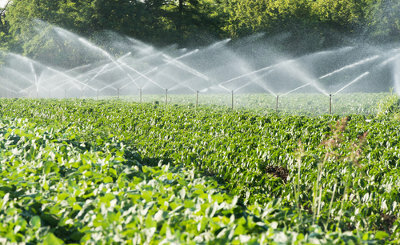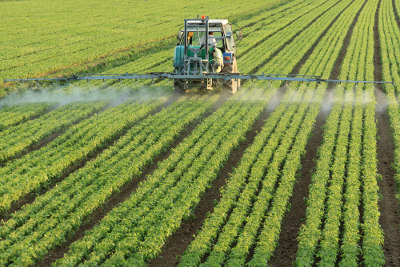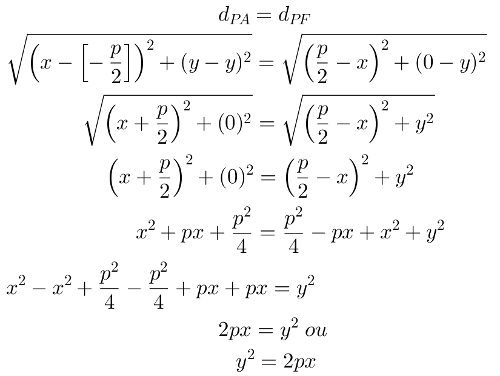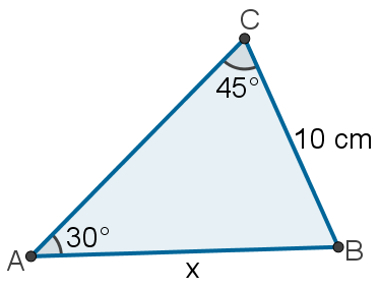What is agriculture?
The term agriculture means “art of farming”. It is the set of techniques designed to cultivate the land in order to obtain products from it. The products of agriculture are primarily food, however, with advances in techniques and in technology, agriculture has increasingly served to supply foodstuffs for fiber production, energy, raw material for clothing, fuel, construction, medicines, tools, ornamentation and countless other purposes. These products, as well as the agricultural methods used, may vary from one part of the world to another.

Irrigation is one of the agricultural techniques that allow the control of production and productivity, regardless of natural factors
Origin
Agriculture marked the beginning of human sedentarism and is essentially linked to the emergence of the first human settlements and the first civilizations. Before the universalization of agriculture, people spent most of their lives in tasks that involved hunting and gathering fruits and plants for food.
About 11,500 years ago, human beings gradually learned to cultivate cereals and tubers and thus were able to settle in one place and establish a life based on agriculture. In the same period, livestock was also started, with the gradual domestication and breeding of animals, which until then were wild. The first civilizations based on intensive agriculture emerged in the vicinity of the Tigris and Euphrates rivers, in Mesopotamia (currently Iraq and Iran), and throughout the Nilo river, in Egypt.
Agriculture allowed humanity to produce food surpluses, which enabled the exchange of goods for other types that were not produced by them. Surpluses also acted as a source of food security in cases where cultivation was harmed by natural factors, such as prolonged drought, frost or excessive rainfall. In addition, food surpluses have given people time to devote themselves to non-farming or food-gathering tasks. From then on, human beings began to develop techniques to make their lives easier and more comfortable, such as building houses and objects that could make their life and work easier.
Mind Map: Agriculture

*To download the mind map in PDF, Click here!
Agriculture modernization
For thousands of years, the development of agriculture was very slow. Good production performance depended essentially on natural factors, such as soil quality, moisture, climatic conditions, relief, proximity to watercourses, etc. These factors determined the quality and quantity of agricultural products cultivated.
However, with the creation and gradual emergence of techniques and tools aimed at controlling production, being human being managed to minimize and, in some cases, eliminate the natural obstacles to achieving productivity desired. Techniques such as crop rotation, soil correction and, mainly, irrigation and pest control allowed human beings to have greater autonomy for the production of agricultural products.
Do not stop now... There's more after the advertising ;)

The use of pesticides (pesticides) and soil fertilizers is an example of agricultural modernization techniques
Many advances in the study and creation of new techniques and technologies applied to agriculture allowed an increase in agricultural productivity. The main ones were:
Tractors, planters and harvesters have replaced animal traction and steam engines. The mechanization of the field made it possible to use machines in almost all stages of cultivation.
The use of chemical products for pest control, especially in developed countries. These pests can range from insects to animals such as rabbits and mice, as well as weeds and disease-causing organisms such as bacteria, viruses and fungi. With the use of chemicals, crop losses and product prices have dropped dramatically.
Fertilization and nutrient replacement in the soil. Scientists have discovered that the essential elements for plant growth are nitrogen, phosphorus and potassium. Currently, a large number of farmers use chemical fertilizers with nitrates and phosphates to significantly increase crop productivity.
Irrigation as a way to control the moisture level in crops. With irrigation techniques, farmers were able to control factors hitherto determinant for agricultural production, such as the frequency and amount of rain. The various irrigation modalities allow – for those who have access to them – that a long dry period no longer represents the loss of a crop, as it used to be in the past.
Genetic modification of seeds and plants. Biotechnology applied to agriculture makes it possible to reorganize genes and add new ones in order to guarantee resistance to diseases and pests and increase crop productivity. These are genetically modified organisms - GMOs or transgenic -, which are widely used in commercial agriculture and common in developed countries.
agricultural systems
Agricultural activities, in general, can be classified according to the techniques of cultivation and distribution of their products. Agricultural systems, however, can be divided essentially into two large groups:
intensive agriculture: system that presents high productivity and is carried out on large tracts of land (large estates). Crops are rotated, fertilizers are used and there is selection of seeds and species. The production, which is mechanized, has a high yield per hectare. The workforce is qualified. It is common in developed countries and, in underdeveloped countries, production is generally destined for export to rich countries.
extensive agriculture: in this modality, productivity is low, small tracts of land are cultivated (minifundios) and simple or more rudimentary techniques are used. Soil is used continuously, without rest or crop rotation, thus causing its depletion. Production is carried out by unskilled labor. It is common in underdeveloped countries where there is still no mastery of techniques to modernize the agriculture, although export-oriented agriculture in these countries has gradually changed. this panorama.
By Amarolina Ribeiro
Graduated in Geography
*Mental Map by Rafaela Sousa
Graduated in Geography


